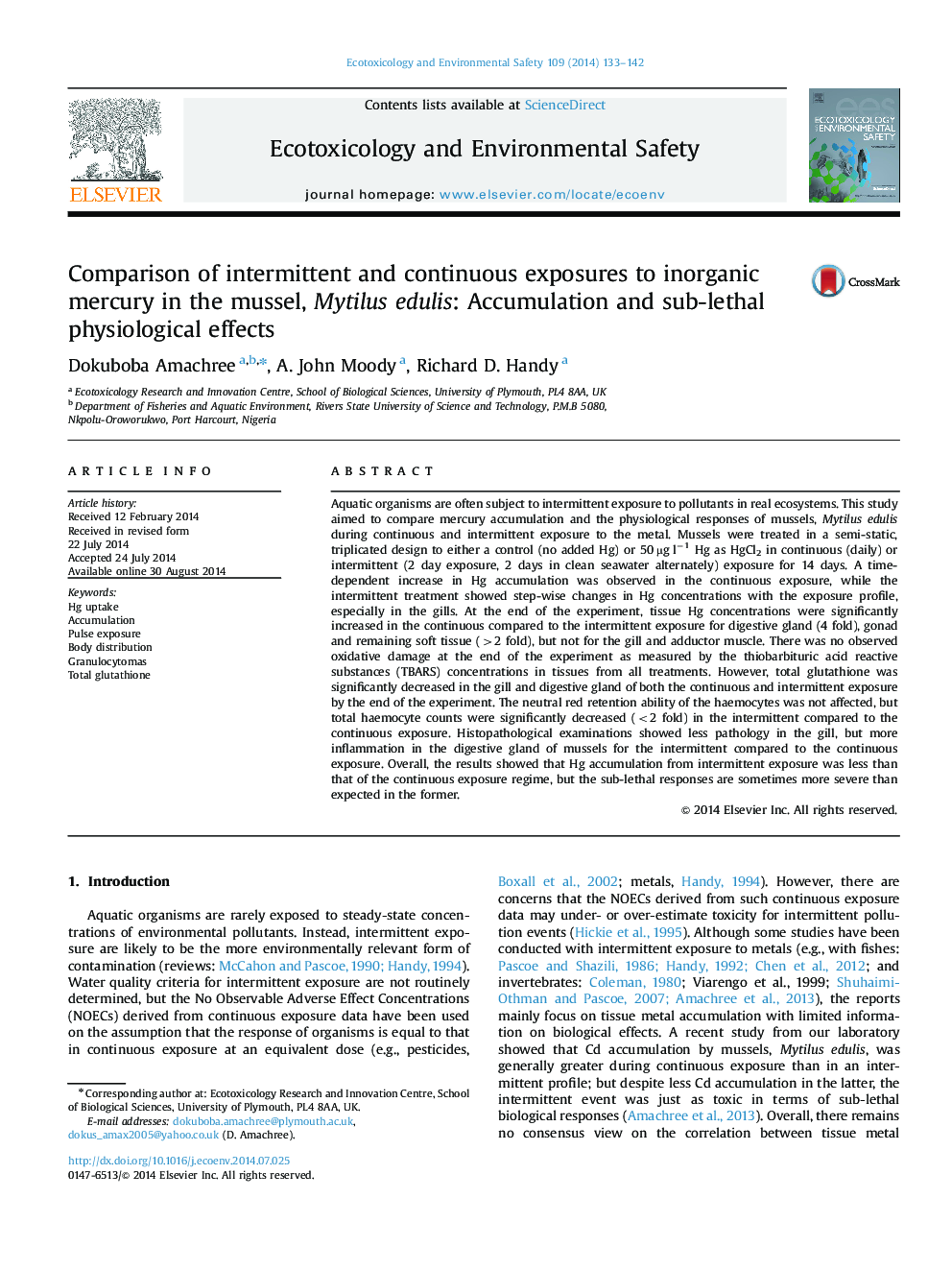| Article ID | Journal | Published Year | Pages | File Type |
|---|---|---|---|---|
| 4419994 | Ecotoxicology and Environmental Safety | 2014 | 10 Pages |
•We compared accumulation and sub-lethal effects of Hg in M. edulis during continuous and intermittent exposures.•Tissue Hg accumulation is higher during continuous compared to the intermittent exposure.•Sub-lethal physiological effects are sometimes more severe than expected in the intermittent exposure.
Aquatic organisms are often subject to intermittent exposure to pollutants in real ecosystems. This study aimed to compare mercury accumulation and the physiological responses of mussels, Mytilus edulis during continuous and intermittent exposure to the metal. Mussels were treated in a semi-static, triplicated design to either a control (no added Hg) or 50 µg l−1 Hg as HgCl2 in continuous (daily) or intermittent (2 day exposure, 2 days in clean seawater alternately) exposure for 14 days. A time-dependent increase in Hg accumulation was observed in the continuous exposure, while the intermittent treatment showed step-wise changes in Hg concentrations with the exposure profile, especially in the gills. At the end of the experiment, tissue Hg concentrations were significantly increased in the continuous compared to the intermittent exposure for digestive gland (4 fold), gonad and remaining soft tissue (>2 fold), but not for the gill and adductor muscle. There was no observed oxidative damage at the end of the experiment as measured by the thiobarbituric acid reactive substances (TBARS) concentrations in tissues from all treatments. However, total glutathione was significantly decreased in the gill and digestive gland of both the continuous and intermittent exposure by the end of the experiment. The neutral red retention ability of the haemocytes was not affected, but total haemocyte counts were significantly decreased (<2 fold) in the intermittent compared to the continuous exposure. Histopathological examinations showed less pathology in the gill, but more inflammation in the digestive gland of mussels for the intermittent compared to the continuous exposure. Overall, the results showed that Hg accumulation from intermittent exposure was less than that of the continuous exposure regime, but the sub-lethal responses are sometimes more severe than expected in the former.
